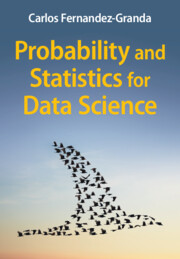Refine search
Actions for selected content:
48569 results in Computer Science
A parametricity-based formalization of semi-simplicial and semi-cubical sets
-
- Journal:
- Mathematical Structures in Computer Science / Volume 35 / 2025
- Published online by Cambridge University Press:
- 23 June 2025, e13
-
- Article
- Export citation
A business process meta-model: construction from the literature and ontological clarifications
-
- Journal:
- The Knowledge Engineering Review / Volume 40 / 2025
- Published online by Cambridge University Press:
- 20 June 2025, e5
-
- Article
-
- You have access
- Open access
- HTML
- Export citation
Accounting for edge uncertainty in stochastic actor-oriented models for dynamic network analysis
-
- Journal:
- Network Science / Volume 13 / 2025
- Published online by Cambridge University Press:
- 20 June 2025, e8
-
- Article
-
- You have access
- Open access
- HTML
- Export citation
Mind over modality? The impact of design representation on shared understanding in collaborative student engineering design
-
- Journal:
- Design Science / Volume 11 / 2025
- Published online by Cambridge University Press:
- 20 June 2025, e19
-
- Article
-
- You have access
- Open access
- HTML
- Export citation

Probability and Statistics for Data Science
-
- Published online:
- 19 June 2025
- Print publication:
- 03 July 2025
An integrated simulation framework for system-of-systems value exploration
-
- Journal:
- Design Science / Volume 11 / 2025
- Published online by Cambridge University Press:
- 19 June 2025, e20
-
- Article
-
- You have access
- Open access
- HTML
- Export citation
Looking within: exploring the effects of social identity-based reflection on novice designers’ task clarification behavior
-
- Journal:
- Design Science / Volume 11 / 2025
- Published online by Cambridge University Press:
- 19 June 2025, e18
-
- Article
-
- You have access
- Open access
- HTML
- Export citation
ROB volume 43 issue 4 Cover and Front matter
-
- Article
-
- You have access
- Export citation
Bayesian adaptive trials for social policy – ERRATUM
-
- Journal:
- Data & Policy / Volume 7 / 2025
- Published online by Cambridge University Press:
- 19 June 2025, e43
-
- Article
-
- You have access
- Open access
- HTML
- Export citation
Navigating an Urban Archive: An exploration of wavefield synthesis as soundscape composition
-
- Journal:
- Organised Sound , First View
- Published online by Cambridge University Press:
- 18 June 2025, pp. 1-9
-
- Article
- Export citation
Point-free calculational proofs and program derivation in linear algebra using a graphical syntax
- Part of
-
- Journal:
- Journal of Functional Programming / Volume 35 / 2025
- Published online by Cambridge University Press:
- 18 June 2025, e13
-
- Article
-
- You have access
- Open access
- HTML
- Export citation
Machine learning and partial differential equations: benchmark, simplify, and discover
-
- Journal:
- Data-Centric Engineering / Volume 6 / 2025
- Published online by Cambridge University Press:
- 18 June 2025, e29
-
- Article
-
- You have access
- Open access
- HTML
- Export citation
FreeCHR – An Algebraic Framework for Constraint Handling Rules Embeddings
-
- Journal:
- Theory and Practice of Logic Programming / Volume 25 / Issue 3 / May 2025
- Published online by Cambridge University Press:
- 16 June 2025, pp. 340-373
-
- Article
-
- You have access
- Open access
- HTML
- Export citation


